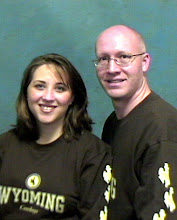There hasn't been much going on with the beehive this winter. When I last checked in with the blog in the first part of December we were experiencing bitter cold temperatures. Since then, though, we have had a very mild winter with most days getting up above freezing.
It seems like a milder winter would be better for the bees, but that isn't necessarily so. As I have learned from another blog called
"What Should I Be Doing With My Bees This Month?", warmer temperatures result in more active bees that require more honey to eat. And if it is warm enough for the queen to start laying, the bees will really consume a lot of honey in an effort to keep all that brood warm. It doesn't take much to draw the conclusion that milder winters could mean more bees starving in February and March if supplemental feed isn't added to the hives. The aforementioned blog is kept by an experienced beekeeper in Minnesota and offers a lot of good tips for beekeeping in northern and colder climates.
As our winter thus far has been fairly mild I have been getting concerned about how much honey might still be left in our beehive. Last week I made a batch of bee candy to put on top of the frames. I used the following recipe:
Add 5 parts sugar to 1 part water. Add 1/4 teaspoon of vinegar for every pound of sugar and bring the whole thing to a boil. Continue to boil until the mixture reaches 234 degrees and then boil for 3 minutes more without stirring. Turn off the heat and allow the mixture to cool while stirring with a whisk. I don't know how far to cool the mixture before pouring it out- I haven't figured that part out yet. (If you are pouring into molds it might not make much difference, but if you are pouring onto a sheet of waxed paper you don't want it to be too hot or it will spread out too thin. That is what happened to me this time.) You can either pour the hot mixture out onto a sheet of waxed paper with a towel underneath or you can pour into a mold such as a cereal bowl or small cake pan that has been lined with waxed paper. Spray the waxed paper with cooking spray to make it easier to remove the candy after it has cooled. A quick google search for
"bee candy recipe" will give you a variety of recipes to choose from.
I made it out to the hive this afternoon to put the bee candy on the top of the frames.
You can see that the candy I poured out on a sheet of waxed paper ended up really thin and broke into several small pieces. I also poured some into two cereal bowls lined with waxed paper.
There were no bees on the top, but I could look down and see the top of the cluster just about an inch below the tops of the frames. The cluster is covering six frames. In the picture above, the cluster is covering the second frame from the top down to the third frame from the bottom. This seems like big cluster to me, but I don't know how far down into the hive the cluster extends. I could see a little way into the hive and I saw that the outer two frames on either end still have capped honey, but I don't know if that honey continues all the way down to the bottom of the frames or not.
In the following picture you can see the top of the cluster down between the frames.
I am hoping that the capped honey plus this bee candy will tide them over until the dandelions and willows start blooming in April.







